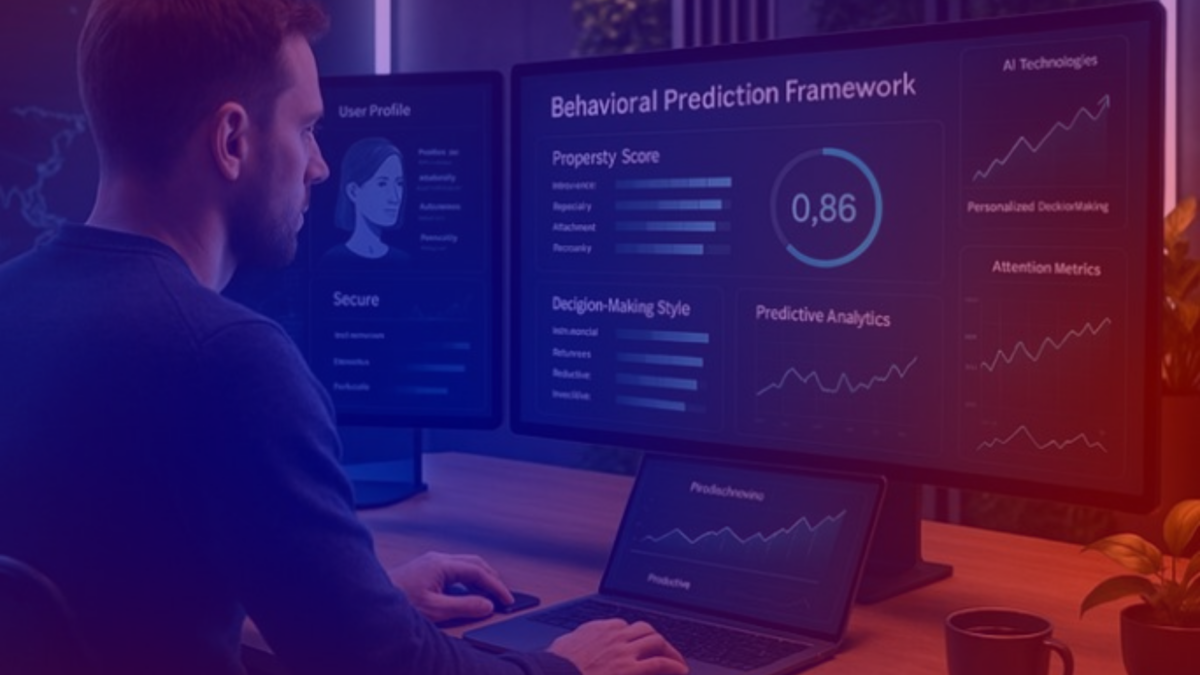AI Outcomes Framework: The Future of Marketing Precision and Personalization in Advertising
A DMEXCO column by Evgeny Popov on the new AI Outcomes Framework that enables marketers to predict user engagement more precisely and thereby allows for better personalization in advertising.

Personalization Beyond Demographics: The New Frontier for Advertising Professionals
In advertising, the holy grail remains to precisely predict consumer behavior. Traditional demographic targeting falls short, struggling to achieve accuracy beyond surface-level interactions. Today, we transcend those limitations with a psychologically informed Behavioral Prediction Framework capable of forecasting user engagement: clicks, purchases, and more with probabilities exceeding 85 percent. This is a major step into the future of personalization in marketing.
Demographics tell us “who”, behavioral data shows us “what”, but psychological insights unlock “why”. The Behavioral Prediction Framework integrates key psychological dimensions: general intelligence, rationality, attachment style, personality, and temperament into an actionable AI Outcomes Framework, enabling advertisers to craft campaigns aligned precisely to cognitive and emotional triggers.
The Psychological Core: Understanding the User
The Behavioral Prediction Framework can improve personalization, for example in advertising, so effectively, because it is grounded in four foundational psychological constructs:
1. General Intelligence (G): Determines how individuals cognitively process and interact with advertising.
- Fluid Reasoning: Engages complex, abstract content.
- Working Memory: Capacity to retain and utilize ad content.
- Verbal Comprehension: Response to logic-driven messaging.
- Processing Speed: Efficiency in engaging with visual stimuli.
2. Rationality (Decision-Making Styles):
- Instrumental Rationality: Goal-oriented ad responses.
- Epistemic Rationality: Prefers fact-based, transparent messaging.
- Reflective Thinking: Deep processing of content and context.
- Heuristic Reliance: Reacts to quick, shortcut-driven cues.
3. Attachment Style (Brand Relationship Orientation):
- Secure: Loyal, consistent engagement.
- Avoidant: Skeptical, resistant to overt personalization.
- Anxious: Seeks frequent reassurance.
- Disorganized: Unpredictable engagement patterns.
4. Personality Functionality (Big Five Model):
- Openness: Prefers novel, innovative ad formats.
- Conscientiousness: Responds to structured, value-driven content.
- Extraversion: Engages readily with interactive and social content.
- Agreeableness: Prefers empathetic, cause-oriented messaging.
- Neuroticism: Reacts strongly to urgency or scarcity cues.
We enhance predictive precision by adding a fifth element — Temperament, featuring traits like emotional reactivity, sociability, and self-regulation to optimize timing and content rhythm.
AI Activation: MCP and A2A Integration
Central to operationalizing this framework are two constructs:
- Model Context Protocol (MCP): MCP ensures each user interaction is contextually enriched, applying real-time psychological modeling to determine the relevance of content. MCP adapts dynamically, predicting engagement probability based on immediate cognitive load and emotional resonance.
Agent-to-Agent (A2A): The A2A construct enhances personalization by enabling intelligent agent collaboration. AI agents representing brand messaging engage with user agents (psychographic AI models) to negotiate optimal content strategies in real-time, achieving deep alignment between user psychology and advertising delivery.
From Theory to Practice: AI Outcomes Framework Implementation
The Behavioral Prediction Framework seamlessly translates into a real-time, JSON-based AI Outcomes Framework. This enables instant integration with digital platforms, providing immediate actionable predictions for user propensity:

Use Cases: Enhancing Ad Performance
This psychologically-informed AI Outcomes Framework has transformative applications:
- Dynamic CDP Segmentation: Real-time segmentation based on psychological profiles rather than just past behaviors, enabling nuanced, effective personalization.
- Optimized DSP Bidding: Predictive intelligence driving real-time bidding strategies, targeting users when cognitive receptivity peaks.
- Adaptive Creative Testing: Psychographic segmentation allows for precise creative variant testing, elevating engagement by aligning messaging closely with cognitive and emotional predispositions.
Conclusion: Unlocking Predictive Precision For More Personalization in Advertising
With the Behavioral Prediction Framework embedded within the AI Outcomes Framework, marketers no longer guess, they predict. By harnessing psychological science, MCP contextualization, and A2A intelligent agent interaction, advertisers achieve unprecedented accuracy, deepening consumer connections, making more personalization in advertising possible and driving tangible business results.
In the competitive landscape of digital marketing, understanding and activating the “why” behind consumer actions is no longer optional; it’s essential. Welcome to the future of advertising precision.





